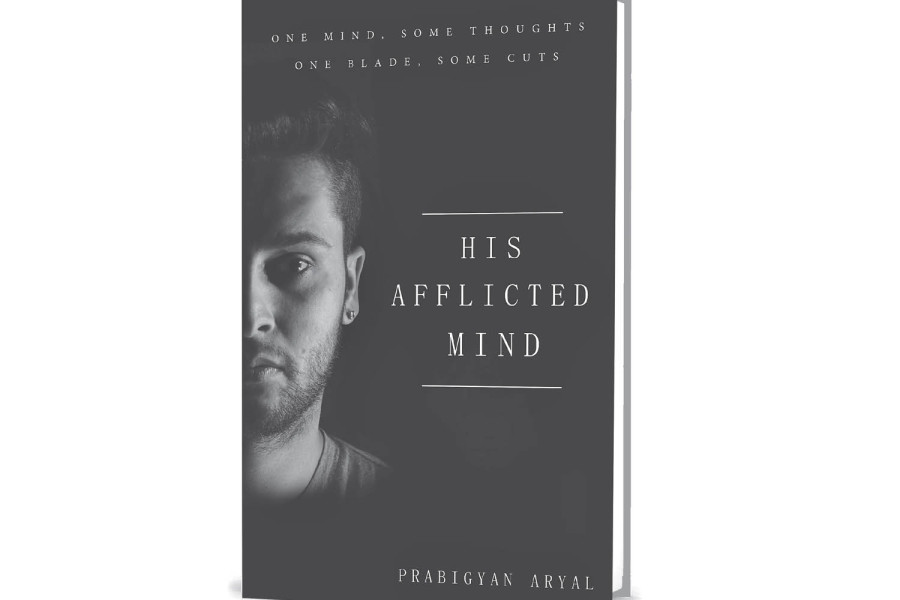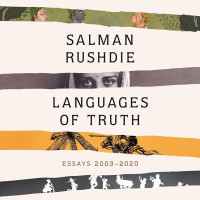Books
Inside a schizophrenic mind
The mysterious tone of ‘His Afflicted Mind’ and its portrayal of mental health struggles keep readers on the hook.
Sanskriti Pokharel
As a kid, I was drawn to horror movies. Even though they were frightening, I couldn’t resist the thrill they provided. As I entered my teens, I slowly moved away from movies and began reading. I naturally gravitated toward psychological thrillers, especially those by Indian author Navoneel Chakraborty. Chakraborty’s Stranger Trilogy introduced me to this genre, and at just thirteen, I found it so terrifying that it robbed me of sleep—it felt as intense as watching horror movies.
Now, in my early 20s, I still seek that same adrenaline rush. My recent read, ‘His Afflicted Mind’ by Prabigyan Aryal, was the ideal book to appease my craving. It left me wondering what would happen next, and in my search for answers, I couldn’t stop reading. The book was a mix of thrill and fear, keeping me hooked until the last page.
Aryal has delved into layered childhood trauma, mental illness, and depression, dissecting these themes. How does the mind of a mentally ill individual function? How can childhood trauma affect an individual’s psyche? These are some of the questions explored in this novel.
The novel’s first page contains a trigger warning. Reading it, I prepared for what lies ahead.
The story starts when one of the protagonists, Aria, talks to her therapist, Dedric. Shaking uncontrollably and feeling nervous, Aria struggles to share things with her therapist. Dedric tries his best to comfort her to share, as reflected in this line:
“Don’t be nervous. I am here to listen. I will respect what you have to say. Take as much time as you want.” Finding comfort in his words, Aria talks about her past. The book then continues in retrospect from December 2, 2017.
This narrative technique piqued my curiosity. In the present, Aria struggles to speak to the therapist, and the author's choice of words to articulate her feelings left me wondering how she reached this place mentally.
On December 2, 2017, in the fictional town of Ashvale—depicted as bleak and frigid under the grip of a harsh winter—Aria recounts her meeting with Arlo, her cherished childhood friend. She yearns for him, aching to return to their carefree days at age eleven when worries unburdened life.
Through her recollection, it becomes clear that Arlo, too, struggled mentally, masking his pain behind a smile. Aria longs to be the one to make him smile, to soothe and love him. However, her yearning never materialises, plunging her into a profound sadness. Her sorrow is so overwhelming that she stands out as the saddest character I have ever read about.
As readers turn a few more pages, they uncover not only the depths of Aria’s sorrow but also the severity of her deteriorating mental health. Aria hears sounds that aren’t real and sees things invisible to others. One day, after hearing strange noises, she peers outside her window and surveys the scene. Despite the thick fog, she spots a man dressed entirely in black, smiling at her. The moment she blinks, he vanishes. At first, readers might dismiss this as a fragment of her imagination. However, it becomes evident that it’s something deeper—schizophrenia, which manifests in such vivid hallucinations.
Aria’s hallucinations go beyond the man in black; she also repeatedly sees a little girl outside her window—the haunting image of her dead daughter, whom she had burned alive when the child was just five years old. Her fractured mind weaves intricate delusions, using the letters ‘no’ and ‘ah’ from her parents’ names, Norbert and Hannah, to conjure an imaginary brother named Noah. Aria recounts a vivid memory of watching Noah murder her parents right before her eyes when she was a child.
However, as the story unfolds, readers discover it was Aria herself who slit her parents’ throats. Her mind, unable to cope with the trauma, deceived her into believing false memories. This twist reveals that Aria suffers not only from schizophrenia but also from confabulation. In this condition, imagined scenarios are confused with real memories, leaving her unable to distinguish between the two.
Hence, the book plunges readers into a shadowy, unsettling world of suspense and unease. As I read, I felt an eerie sensation. The author’s ability to evoke such emotions is commendable.
What makes ‘His Afflicted Mind' especially engaging is its unpredictable nature. The narrative is slow-paced, deliberately, as it doesn’t reveal everything. Instead, the story keeps you guessing, feeding your curiosity piece by piece. Mysterious events unfold one after another, and just when you think you’ve figured things out, another twist takes you by surprise. This constant anticipation kept me glued to the book, unable to put it down.
Additionally, Aryal captures the inner workings of a mentally ill mind with a raw, unfiltered authenticity. Tackling significant subjects like mental illness and childhood trauma while battling depression must have been a difficult task for Aryal. In the author’s note, he writes, “I wrote this book as a way of dealing with depression in my own life and in the hopes of getting more people to understand about what goes on in the mind of someone who is psychologically ill.”
In addition, the writing style in ‘His Afflicted Mind’ is characterised by its simplicity, making it accessible to a broad audience. However, readers should be prepared to encounter a few grammatical errors throughout the book. For example, on page 105, the sentence reads, “She is more precious that life itself,” and on page 212, “I cannot to do this.” These errors disrupted the flow of the story and detracted from the emotional impact the book was striving to convey. It’s unfortunate, as more attention from the author and editor could have ensured a more polished reading experience.
_____
His Afflicted Mind
Author: Prabigyan Aryal
Publisher: Daami
Year: 2019
Pages: 218




 20.12°C Kathmandu
20.12°C Kathmandu










